- Silk Road 8: Khunjerab Pass to Passu, Hunza, Pakistan
- Silk Road 9: Karakorum Highway; Karimabad, Pakistan
- Silk Road 10: Gilgit to Skardu, Pakistan
- Silk Road 11 : Skardu; and Khaplu Fort, Pakistan
- Silk Road 12 : Onto Shigar Fort and onwards
- Silk Road 13 : Giglit to Islamabad via Kohistan
- Final Silk Road Episode: Islamabad and Lahore
Skardu is a large town, located in a valley at the confluence of the Indus river and the Shigar rivers, about 8,200ft above sea level. It is within the Karakoram mountain range. It is also a big military and police garrison town, and not far from the Kashmir line of control.
The history of Skardu dates back over 400yrs, and is also known as Little Tibet due to the Tibetan influence, and language mixes. The language here is Balti, different from the Shina spoken in Gilgit. The town itself does not offer much, but it is a major point for mountain & glacier trekking expeditions, into the Karakoram range, with access to 14 peaks that are over 8,000m (26,000ft). There is also a huge National park (Central Karakoram National Park) created here to preserve the natural flora and fauna; and there is also the K2 (2nd highest mountain in the world) Museum here.
 View from our hotel/B&B room window in Skardu
View from our hotel/B&B room window in Skardu
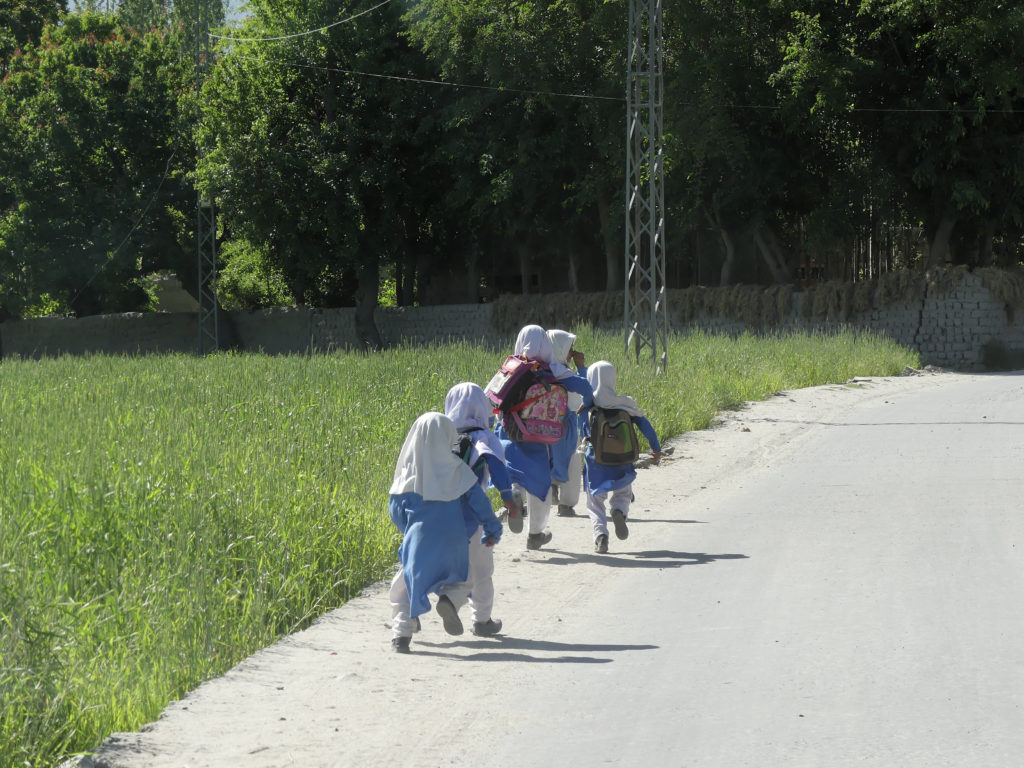 On the way, tried to take pictures of some schoolgirls, but they ran away; I believe this area is more conservative than Hunza and females are less inclined to be photographed. A reflection of the Purdah Bazaar we witnessed the day before
On the way, tried to take pictures of some schoolgirls, but they ran away; I believe this area is more conservative than Hunza and females are less inclined to be photographed. A reflection of the Purdah Bazaar we witnessed the day before
We went off to visit Satpara Lake, which is now actually dammed and so water levels are rising; the dam provides electricity and the supply of fresh water to Skardu. From Satpara, is the road that goes to Deosai Plains, a high natural plateau in the Karakoram Mountains, but unfortunately, the road was not yet open; it opens a little later on in the season. So we had to skip the Deosai plains.
 Water channel, and hydro power station, on way to Satpara Lake
Water channel, and hydro power station, on way to Satpara Lake
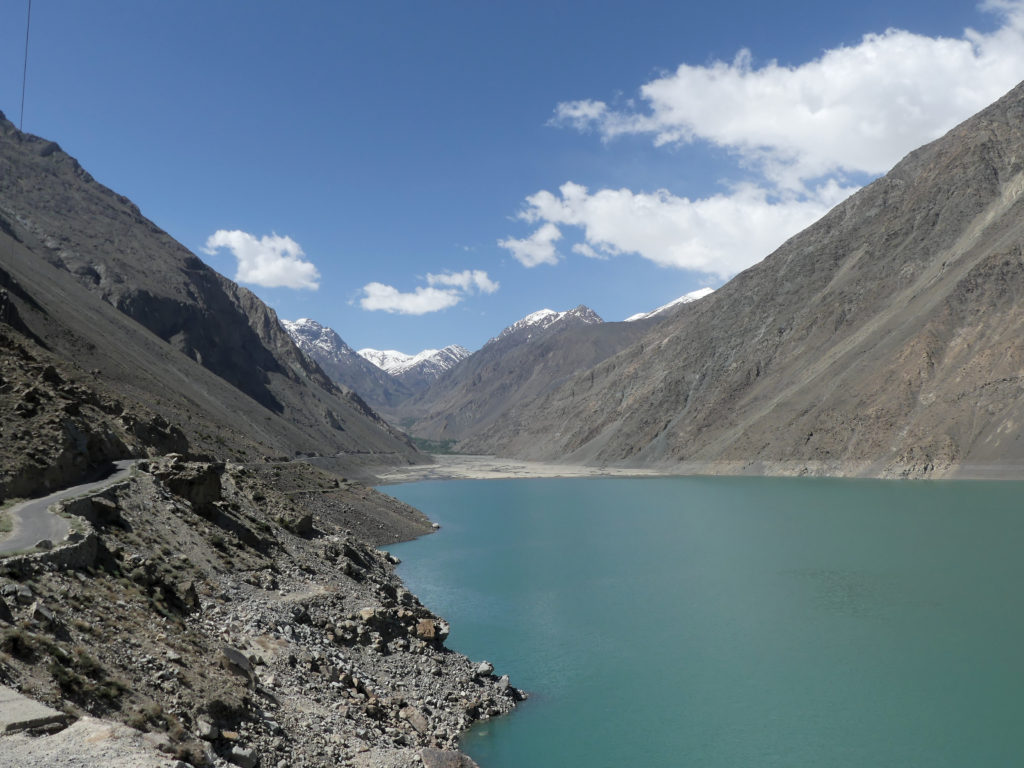 Beautiful Satpara lake, with Satpara village way back in the valley under the mountains
Beautiful Satpara lake, with Satpara village way back in the valley under the mountains
 Beautiful turquois waters of Satpara Lake, The building in the background was a PDTC Motel, until the rising waters of the lake due to the dam cut off access to the Motel; now abandoned.
Beautiful turquois waters of Satpara Lake, The building in the background was a PDTC Motel, until the rising waters of the lake due to the dam cut off access to the Motel; now abandoned.
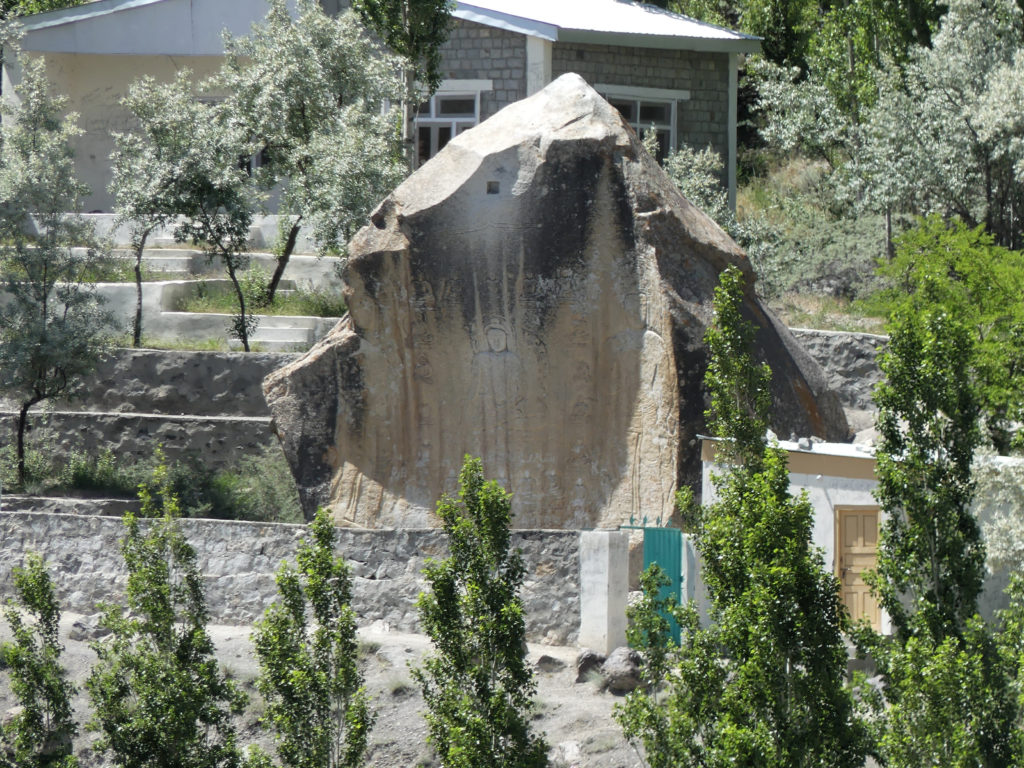 Buddha Rock paintings and carvings; evidence of Buddhist influence before Islam.
Buddha Rock paintings and carvings; evidence of Buddhist influence before Islam.
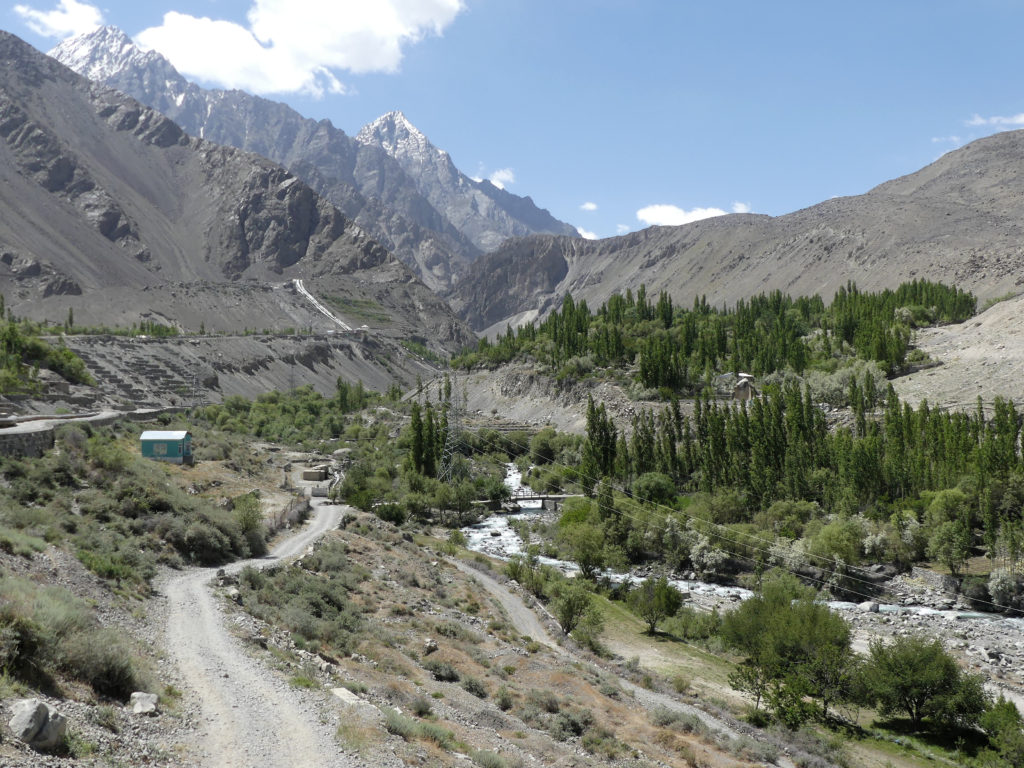 View of the valley outside Skardu
View of the valley outside Skardu
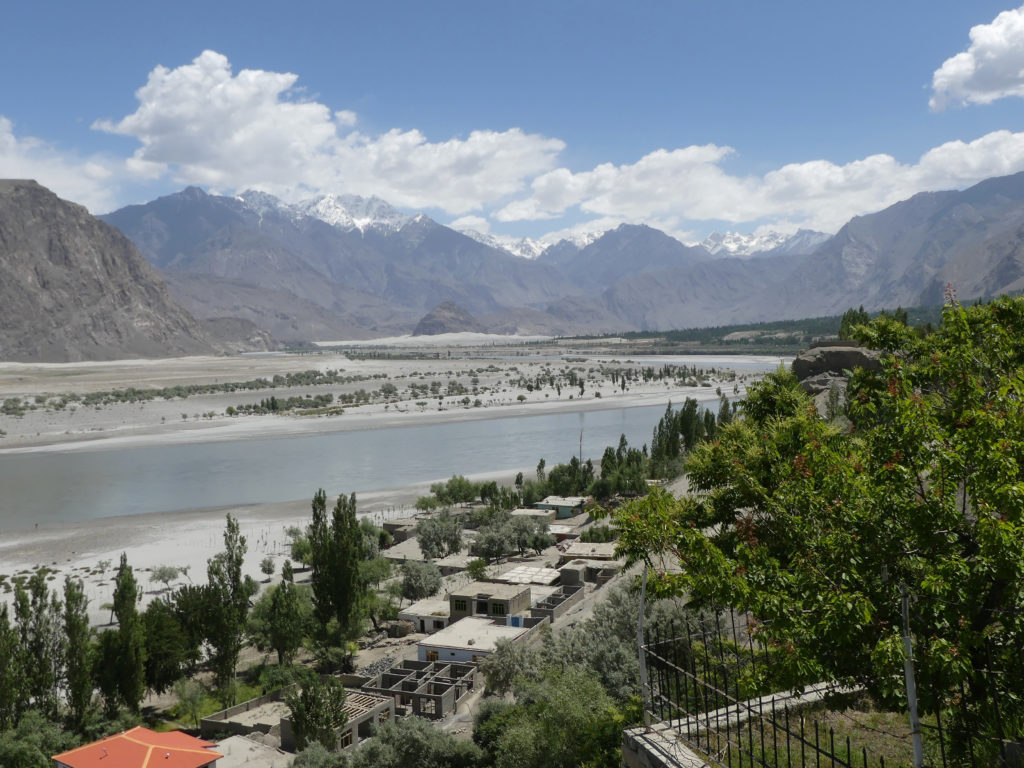 Indus river landscape at Skardu
Indus river landscape at Skardu
Instead, we decided to visit the K2 Museum in Skardu, and then headed over to nearby Khaplu, another village (106km east) closer to the Tibet/China border, where the Aga Khan Development Network (AKDN) had converted an old palace/fort of the Raja of Khaplu into an hotel to aid tourism development in Khaplu. So off we drove, once again through some stunning scenery, and small towns.
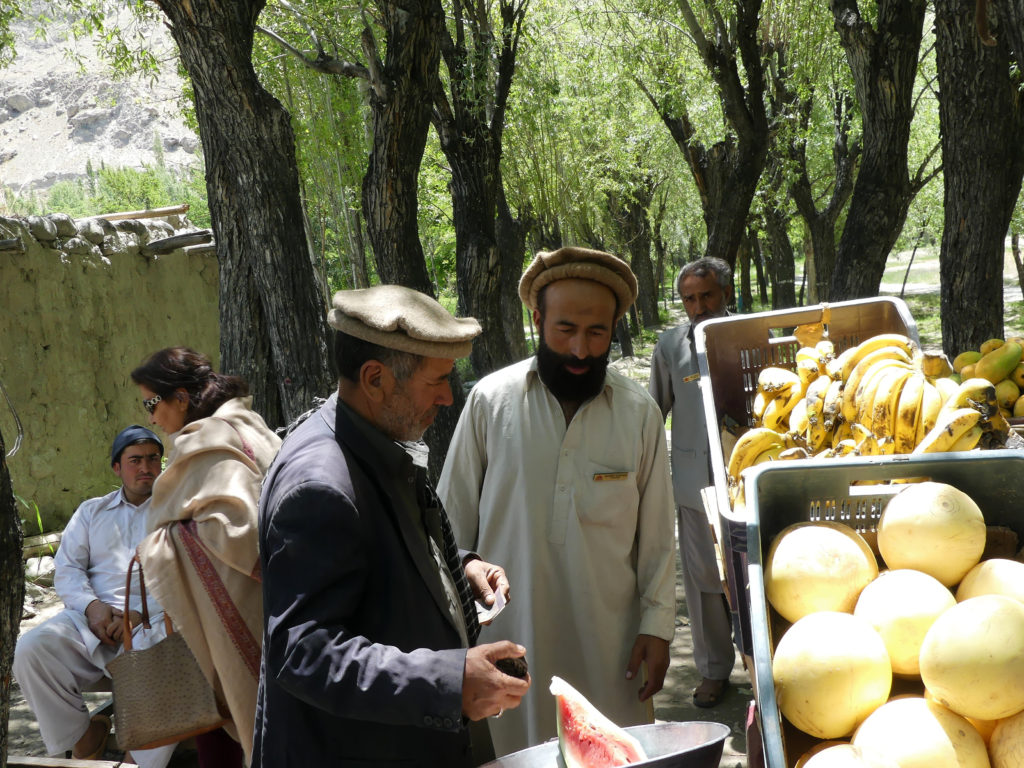 Fruit stand stop for fresh fruits and watermelon
Fruit stand stop for fresh fruits and watermelon
 Farming on flat lands with irrigation
Farming on flat lands with irrigation
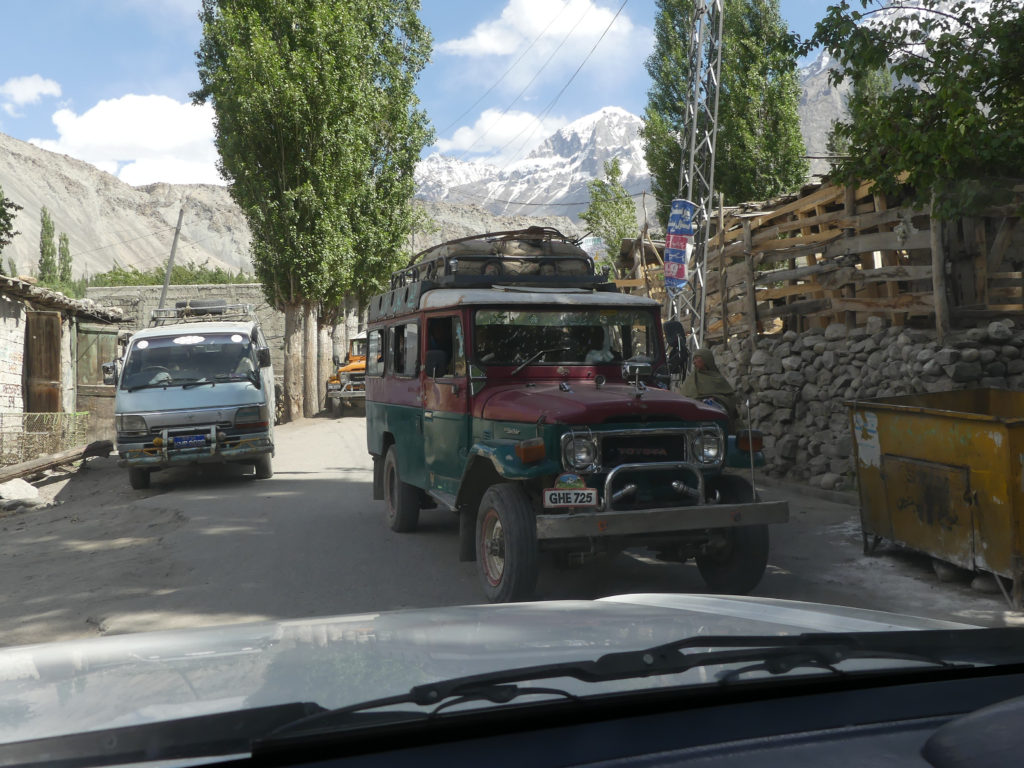 Local transportation on these old diesel 4×4 Landcruisers
Local transportation on these old diesel 4×4 Landcruisers
 Note the children’s features; on way to Khaplu
Note the children’s features; on way to Khaplu
 River, mountains, and Rocky outcrops
River, mountains, and Rocky outcrops
At every district crossing, there was a Police Checkpoint where all our papers were checked and recorded. At the Khaplu district checkpoint, the police decide we needed a police escort. Upon asking them if there was any kind of trouble ahead in Khaplu, they assured us that there was no trouble or issues in the area, but they were simply following protocol. So a policeman armed with a sub-machine gun jumped into the back of our car and drove with us all the way into Khaplu town.
When visiting India, I always get sick for 1 day; and Pakistan is no exception; I fell sick while on this road. Dilshad believes it was the lettuce I had eaten the previous day (that she and many friends had warned me against eating lettuce :(). Along the way, taking pictures of school children almost always ended up with schoolgirls running away or hiding their faces; I remember from the previous day that this is a conservative society as we never saw any women walking around Skardu town (Pardah bazaar)
We reached Khaplu, sprawling village on a mountainside, and checked into the Serena Khaplu Fort hotel (& said goodbye to our armed escort). This fort/palace was actually the previous palace of the Raja of Khaplu, who donated their old residence (Tibetan architecture) to AKDN to convert into an hotel, as maintenance of this old place was becoming difficult. The palace is built with wood, mud, and clay. Our rooms were actually in what were the stables of the palace; the fort itself was on a hilltop to one side of the palace, was actually in ruins as it had not been used for a long time (thank god for peace). Khaplu is also a major point for trekking into the many mountain peaks and glaciers in this area.
After settling in, we decided to take a walk through the village to visit the old Chaqchan mosque (built in 1370AD) and is one of the oldest mosques in Pakistan.
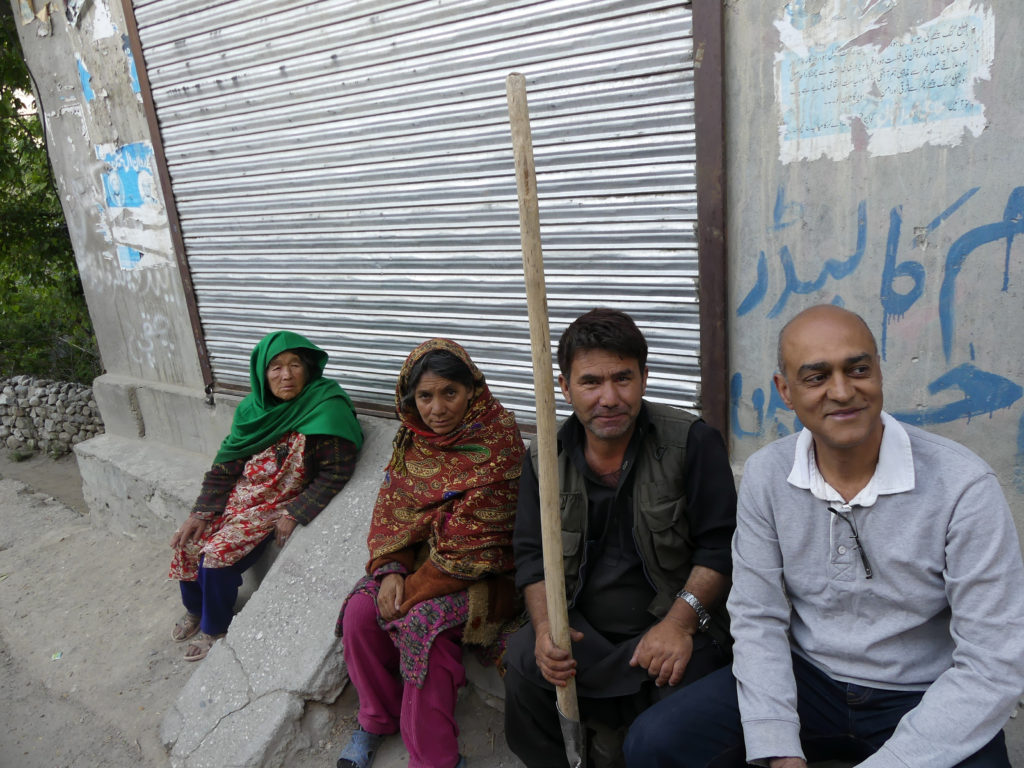 With friendly locals in Khaplu village
With friendly locals in Khaplu village
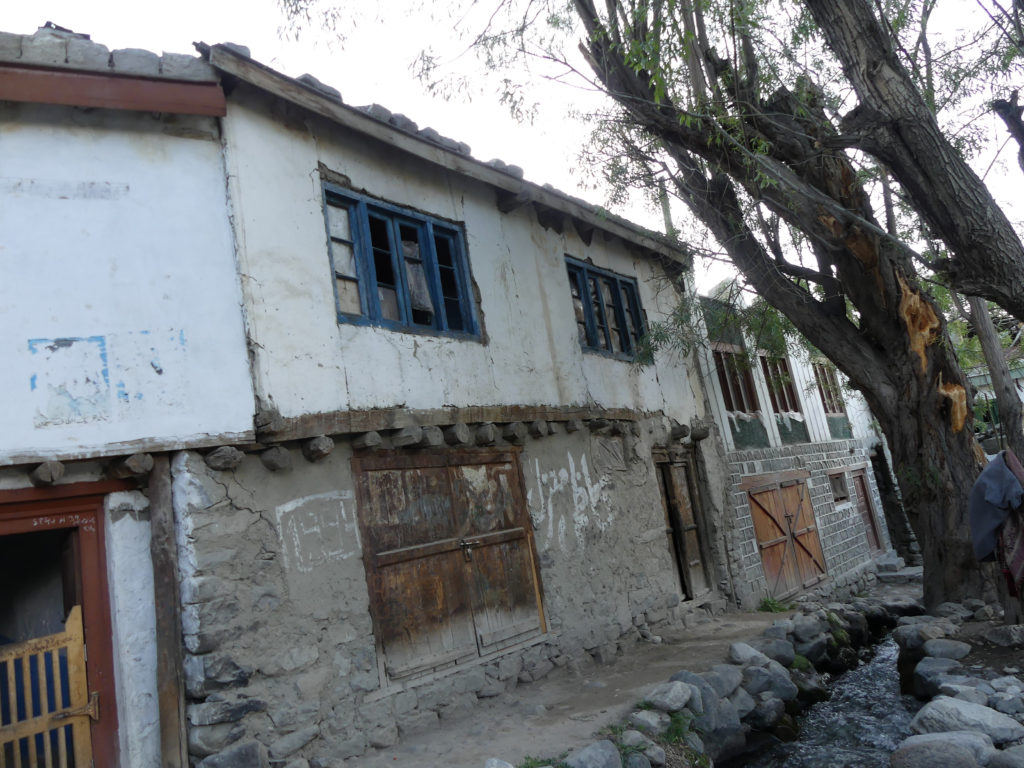 Lot of mud adobe, wood, and stone construction
Lot of mud adobe, wood, and stone construction
After a pleasant walk through Khaplu village, we arrived at the Chaqchan mosque, still used daily for prayers (prominent sign saying non-muslims not allowed). It is a wood mosque, with many delicately carved designs, and belongs to the Nūrbkahshīya Shia sect. TheNūrbkahshīya sect is a Sufi sect.
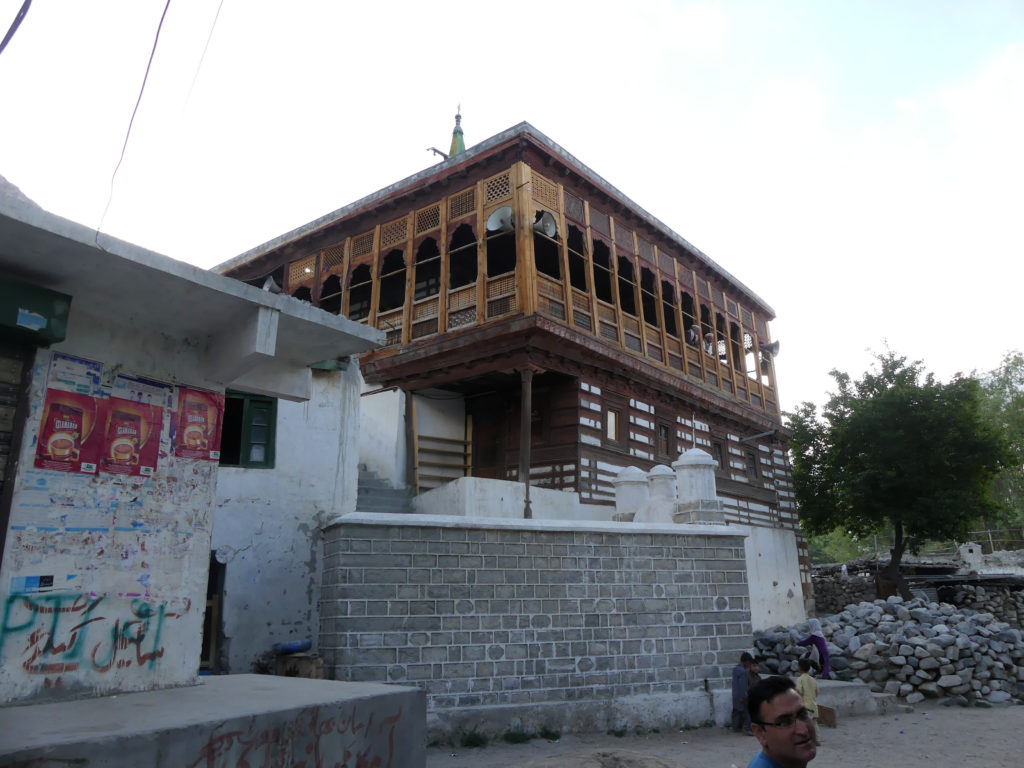 Chaqchan mosque; made of wood, mud adobe; from 1370AD
Chaqchan mosque; made of wood, mud adobe; from 1370AD
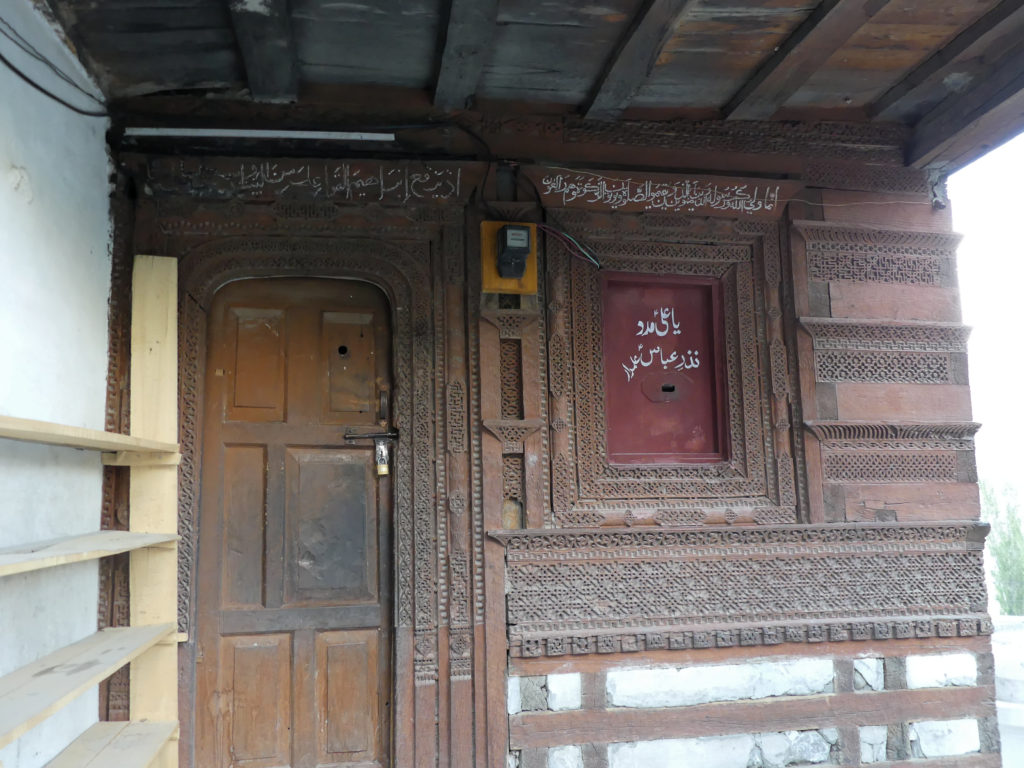 Chaqchan mosque; note the wood carvings
Chaqchan mosque; note the wood carvings
 Chaqchan mosque, balcony outside main prayer hall, notice the man praying
Chaqchan mosque, balcony outside main prayer hall, notice the man praying
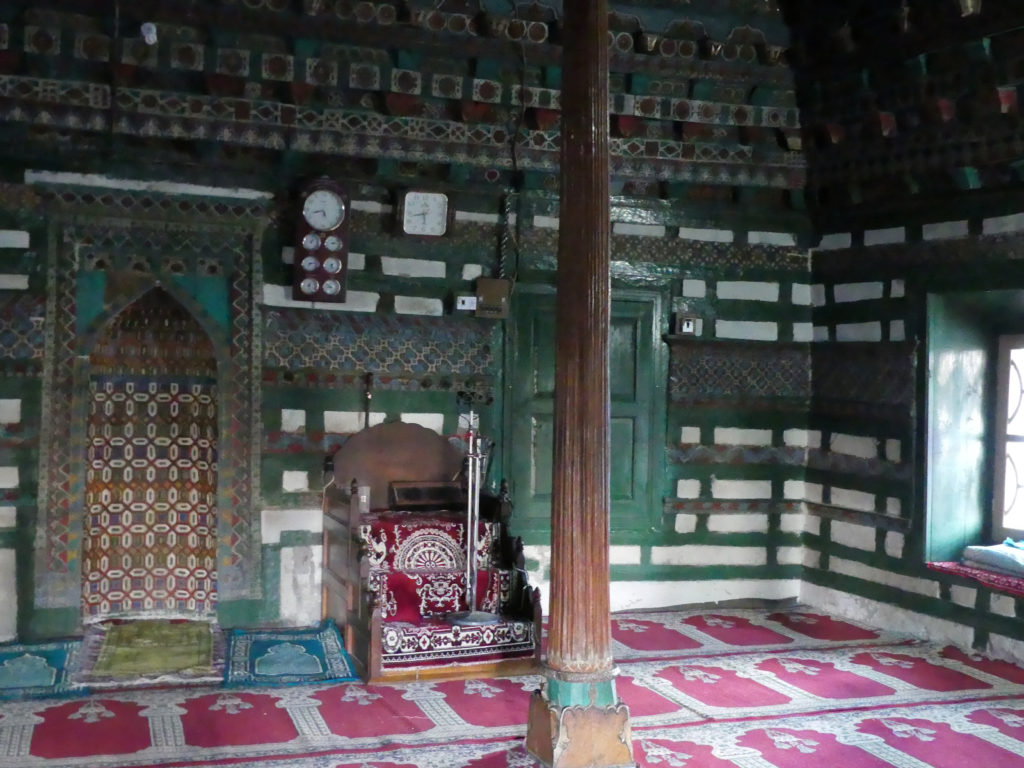 Inside Chaqchan mosque
Inside Chaqchan mosque
 Ceiling Chaqchan mosque. Note the design is similar to the square inside square found in Tajik architecture; that helps resist earthquakes
Ceiling Chaqchan mosque. Note the design is similar to the square inside square found in Tajik architecture; that helps resist earthquakes
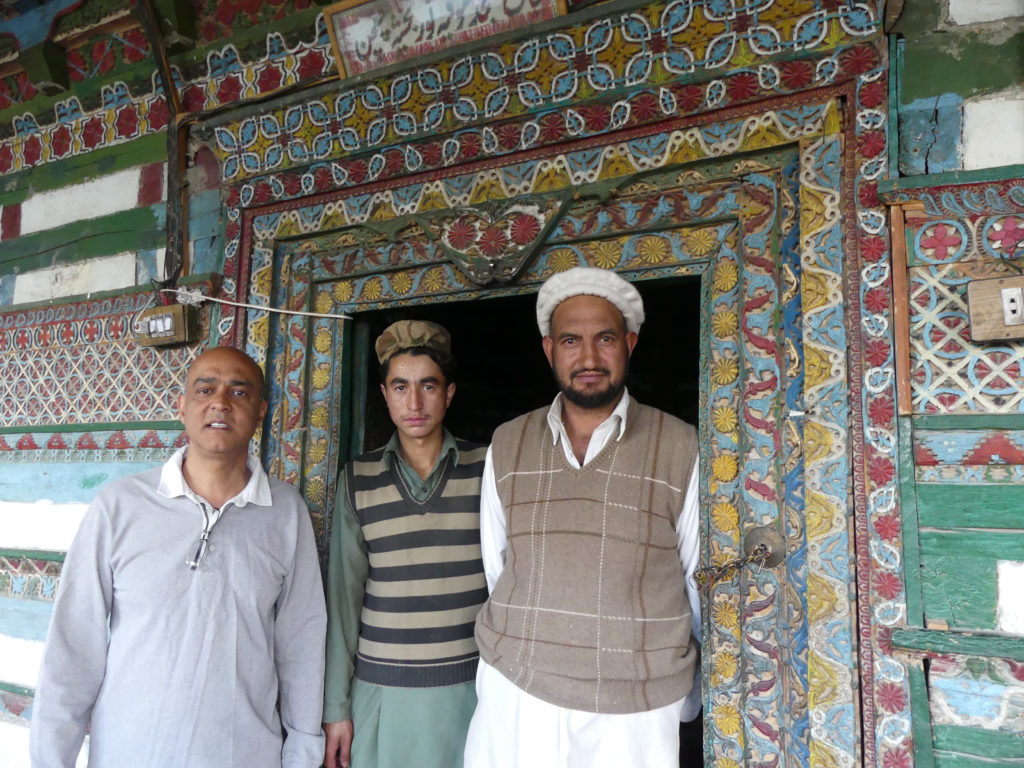 Chaqchan mosque, with friendly locals
Chaqchan mosque, with friendly locals
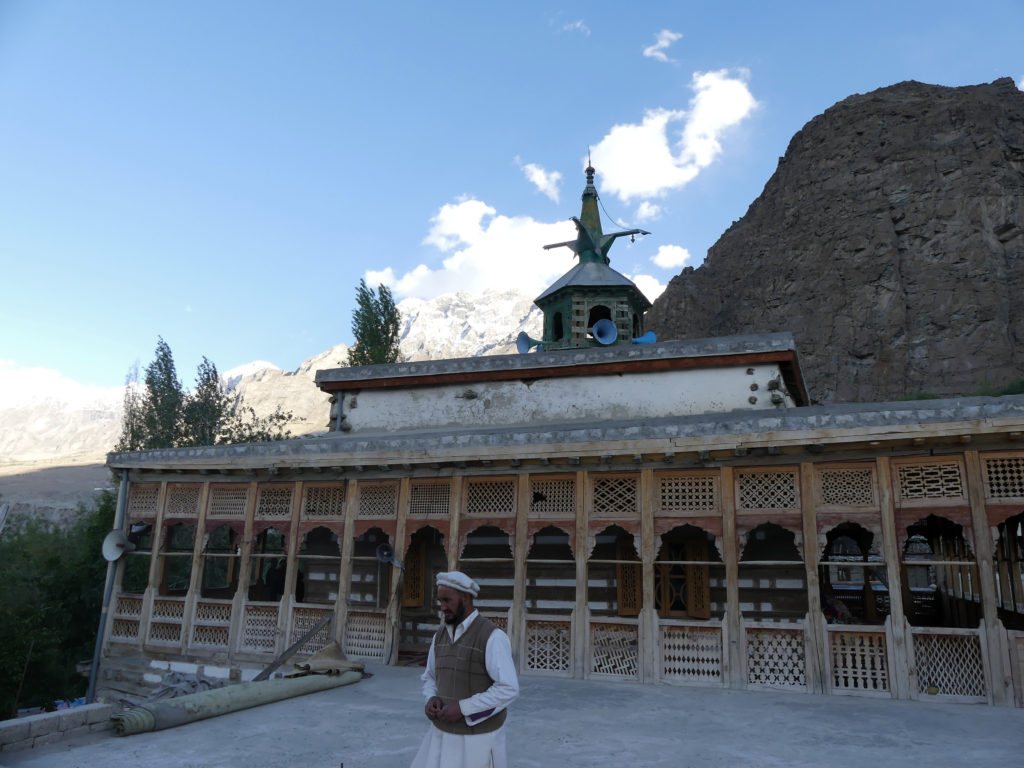 Chaqchan mosque, unique “minaret” design to the Nūrbkahshīya Shia sect
Chaqchan mosque, unique “minaret” design to the Nūrbkahshīya Shia sect
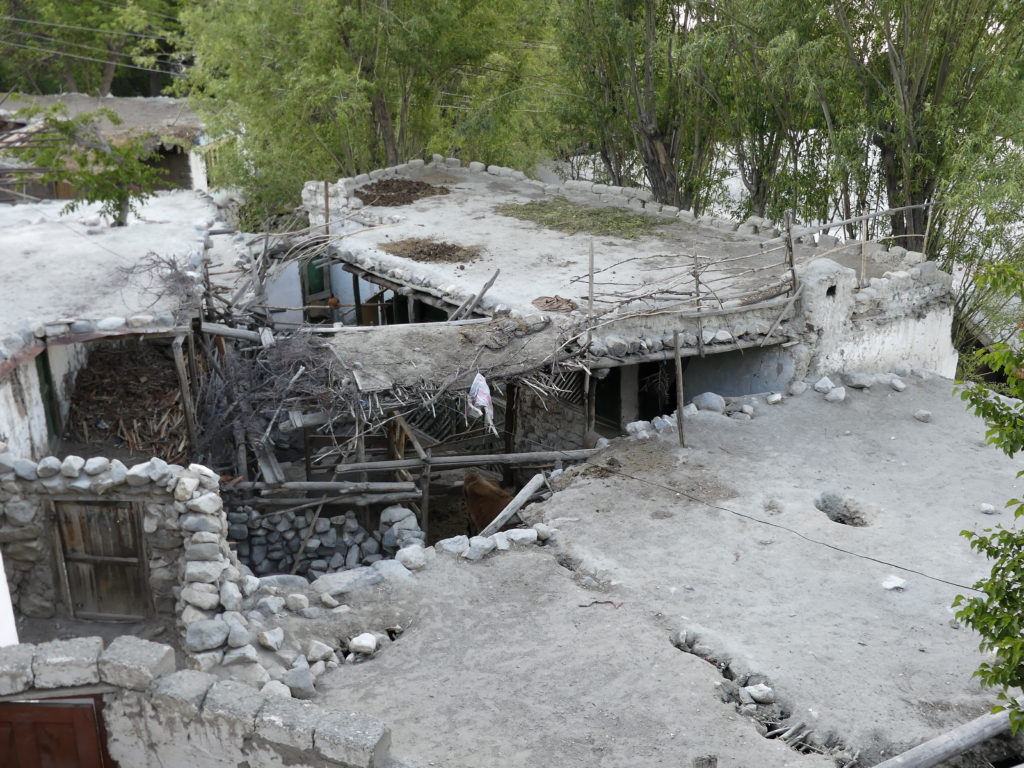 Housing in village by Chaqchan mosque; note the flat roofs and drying
Housing in village by Chaqchan mosque; note the flat roofs and drying
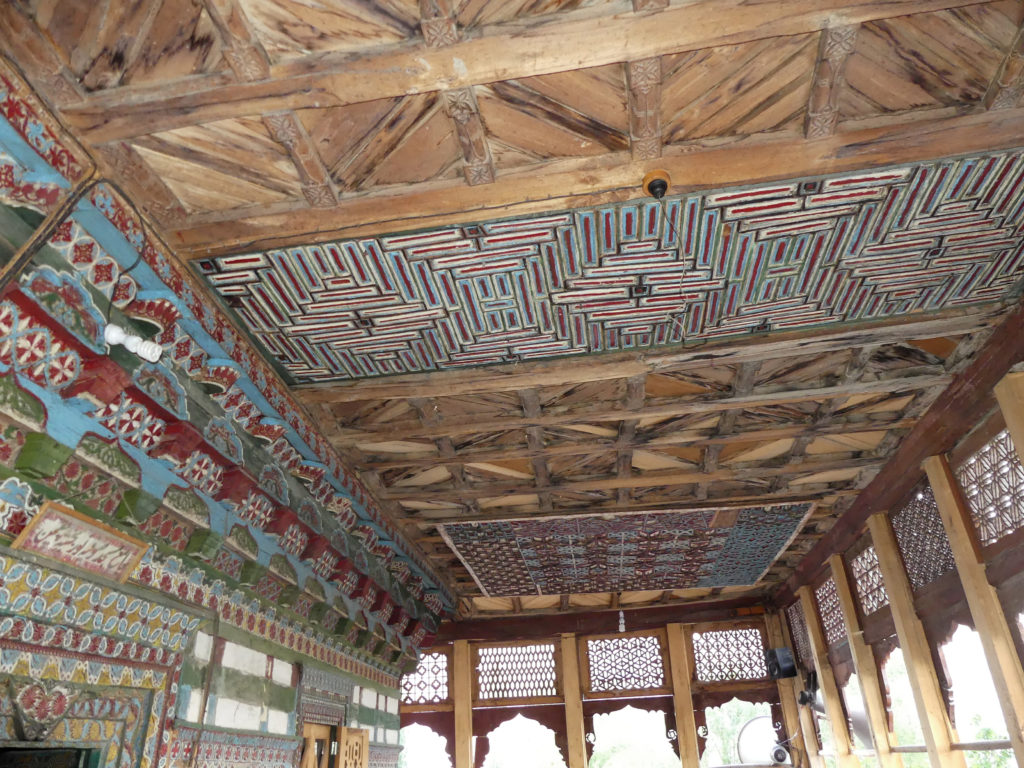 Chaqchan mosque; designs on wood
Chaqchan mosque; designs on wood
The old mosque was quite interesting and well preserved. Outside the mosque, we came upon some school children that Dilshad befriended, and so we had an interesting talk with them; they spoke Balti, Urdu and some English, so we were able to converse, and they were able to practice their English. They even invited us to their homes for dinner! I got to talk to the young boys who were keen to talk with us.
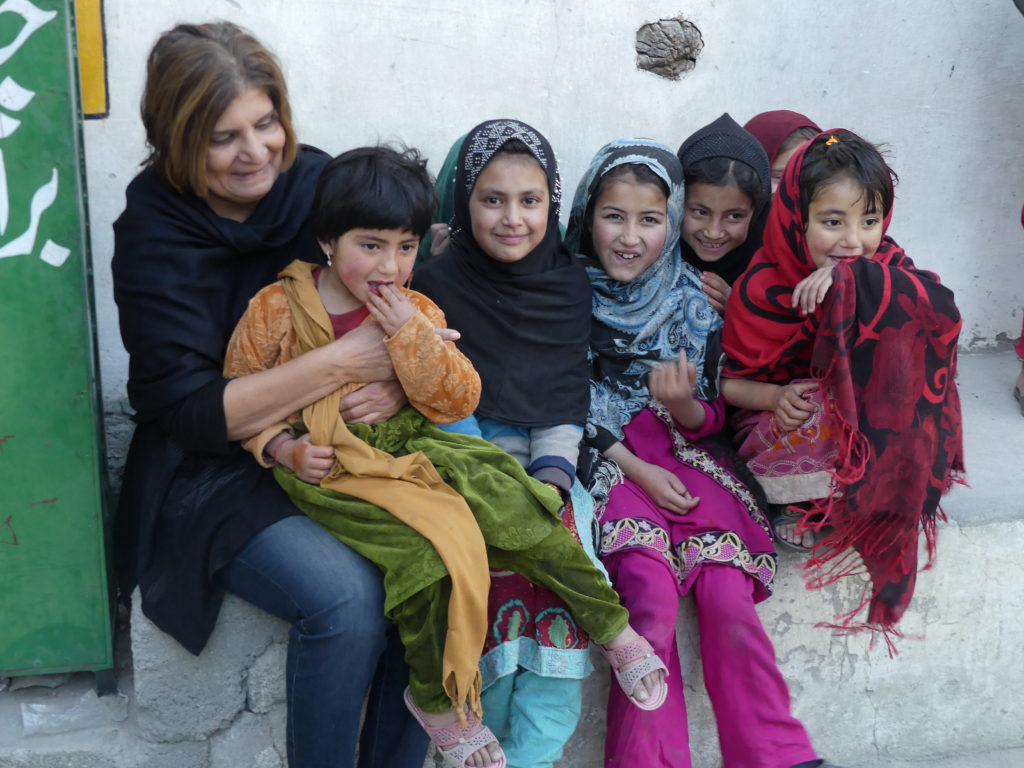 Dilshad’s friends outside Chaqchan mosque; all Nourbakshia
Dilshad’s friends outside Chaqchan mosque; all Nourbakshia
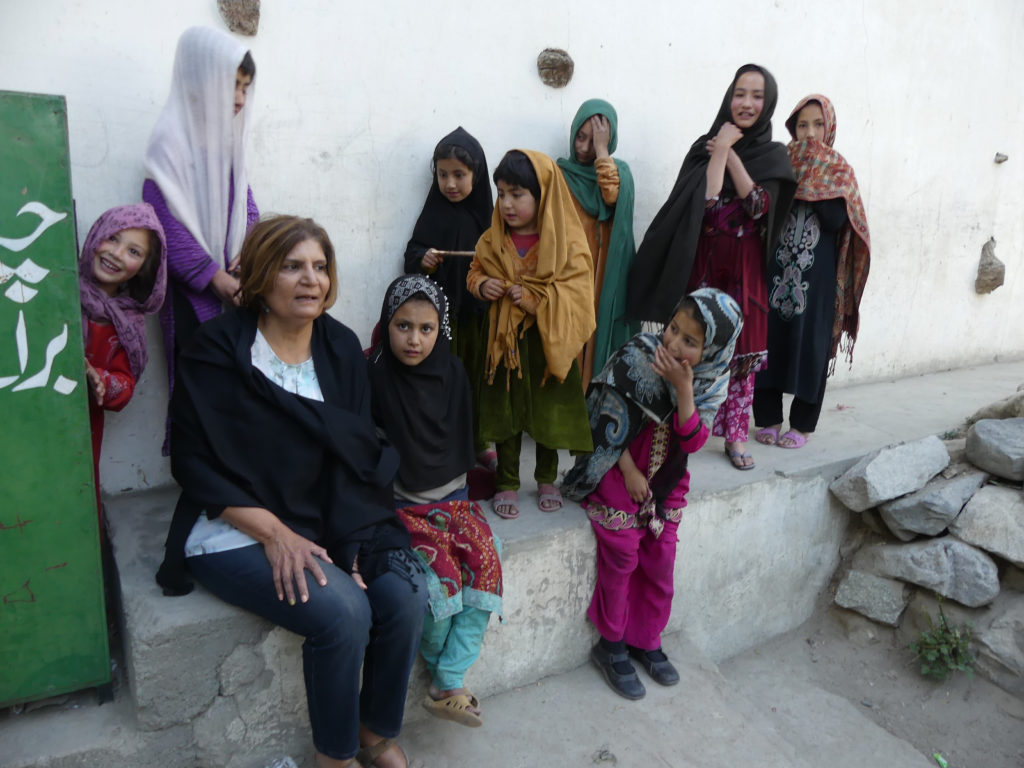 Dilshad’s friends Iman and Fatima
Dilshad’s friends Iman and Fatima
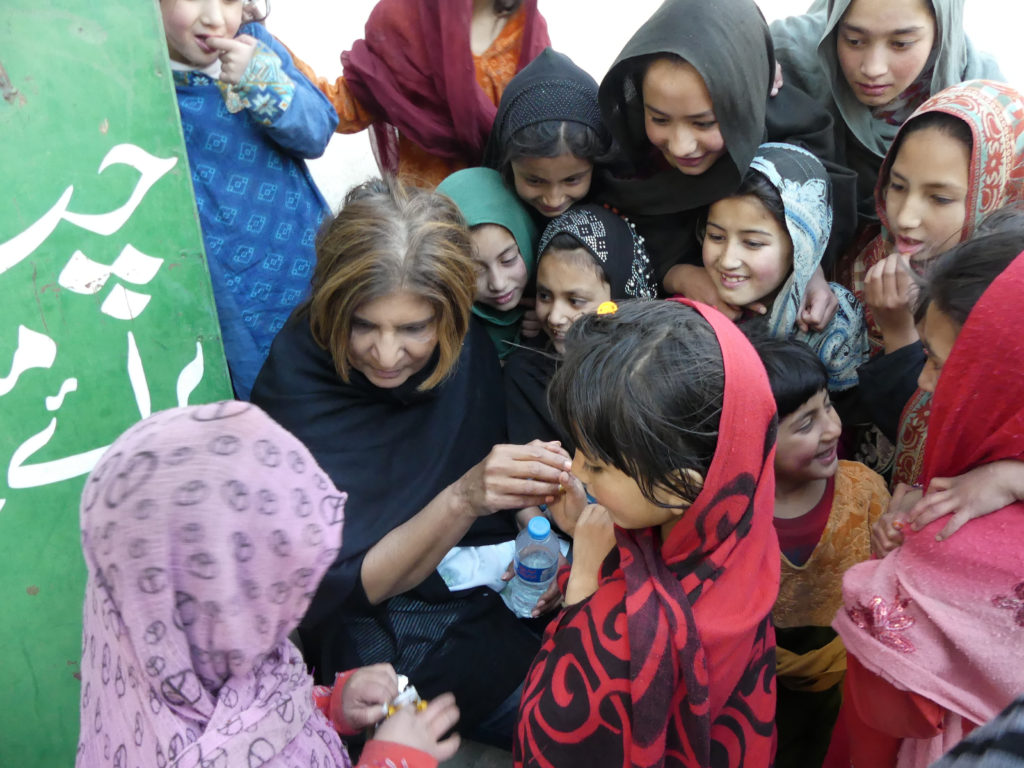 Many interesting questions posed to Dilshad
Many interesting questions posed to Dilshad
 Me with the young boys; practicing English with everyone
Me with the young boys; practicing English with everyone
After some more walking around, we went back to the hotel, early dinner.
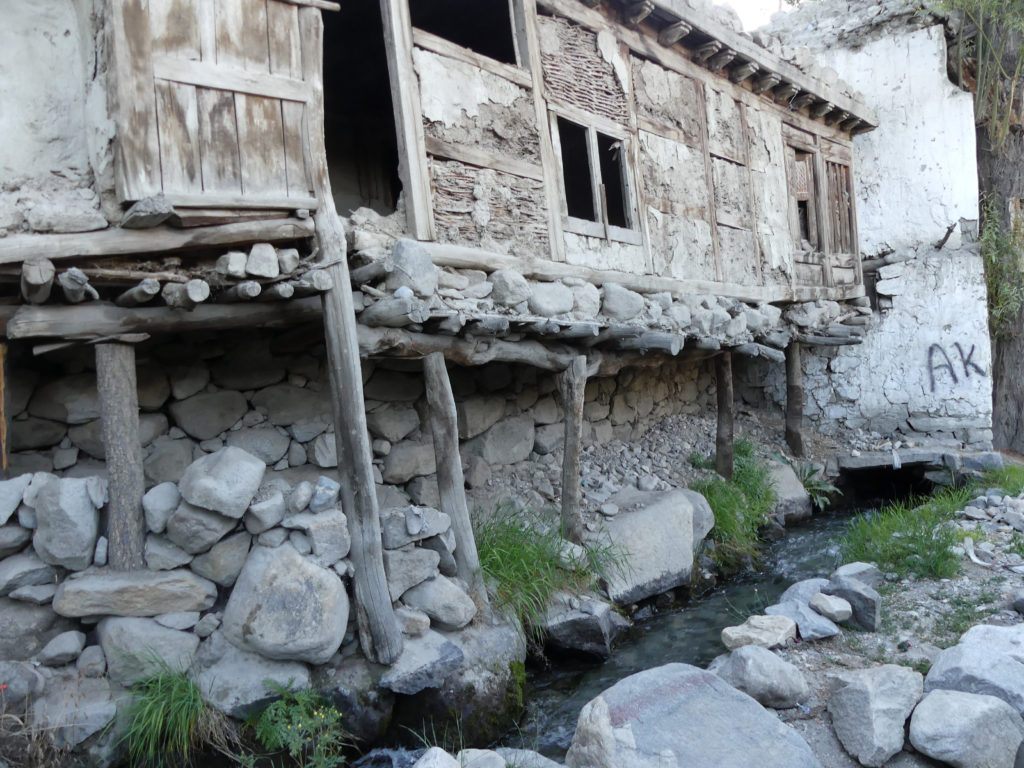 Many areas of the village were quite poor
Many areas of the village were quite poor
 Stone, mud and wood construction
Stone, mud and wood construction
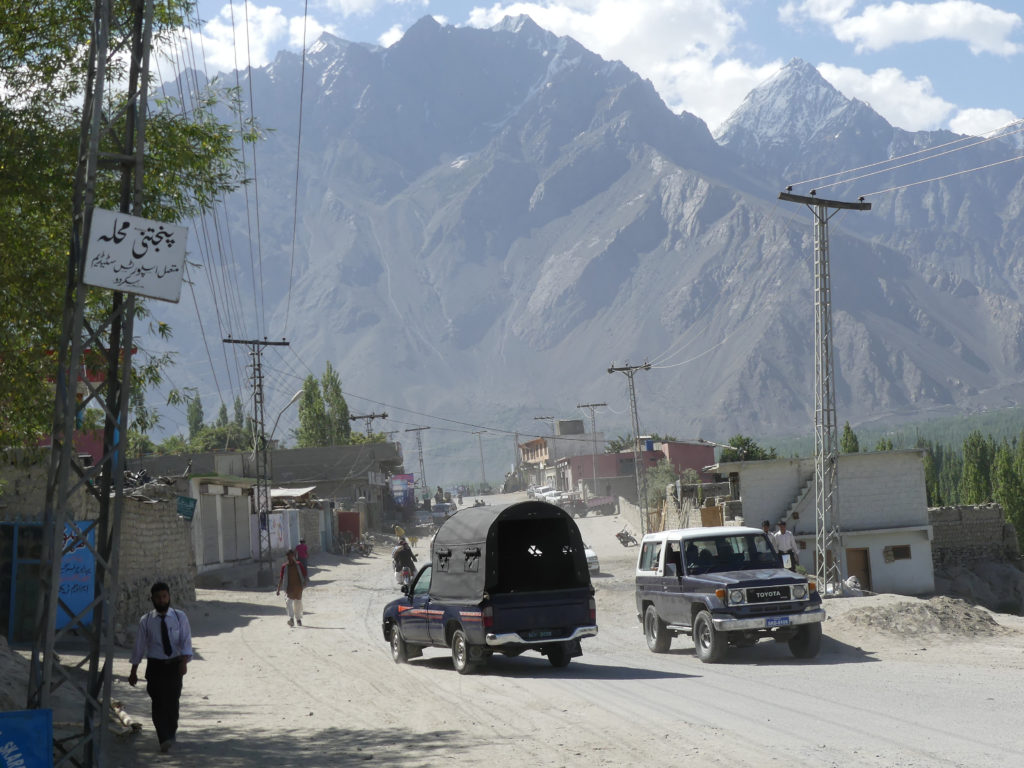

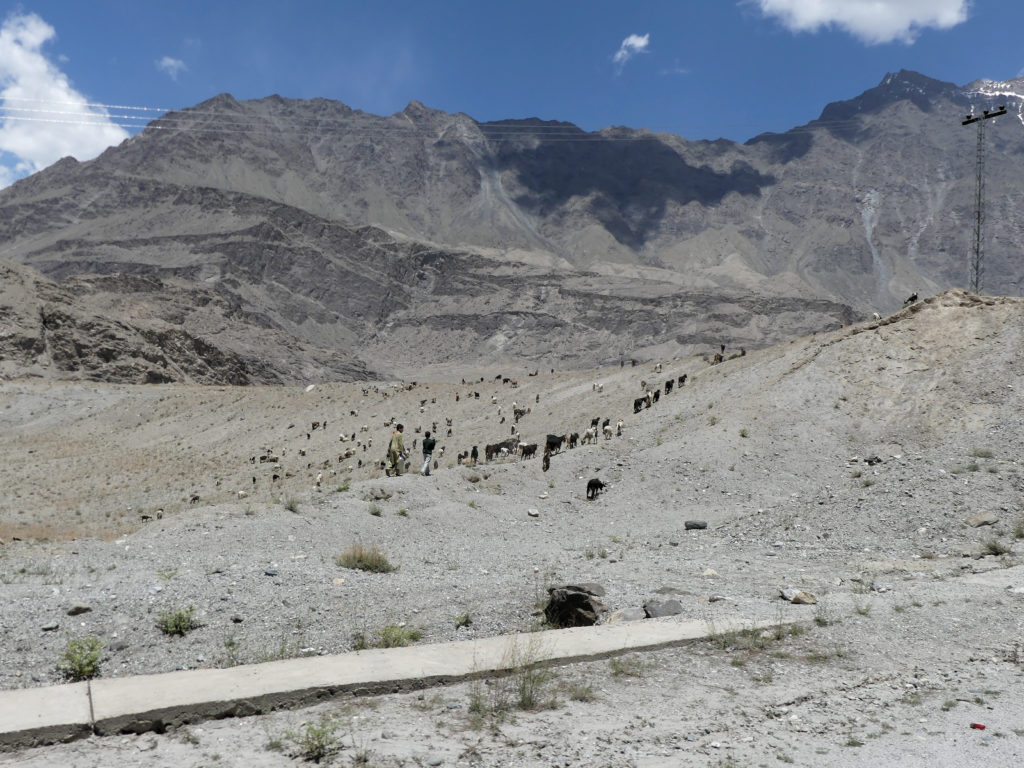
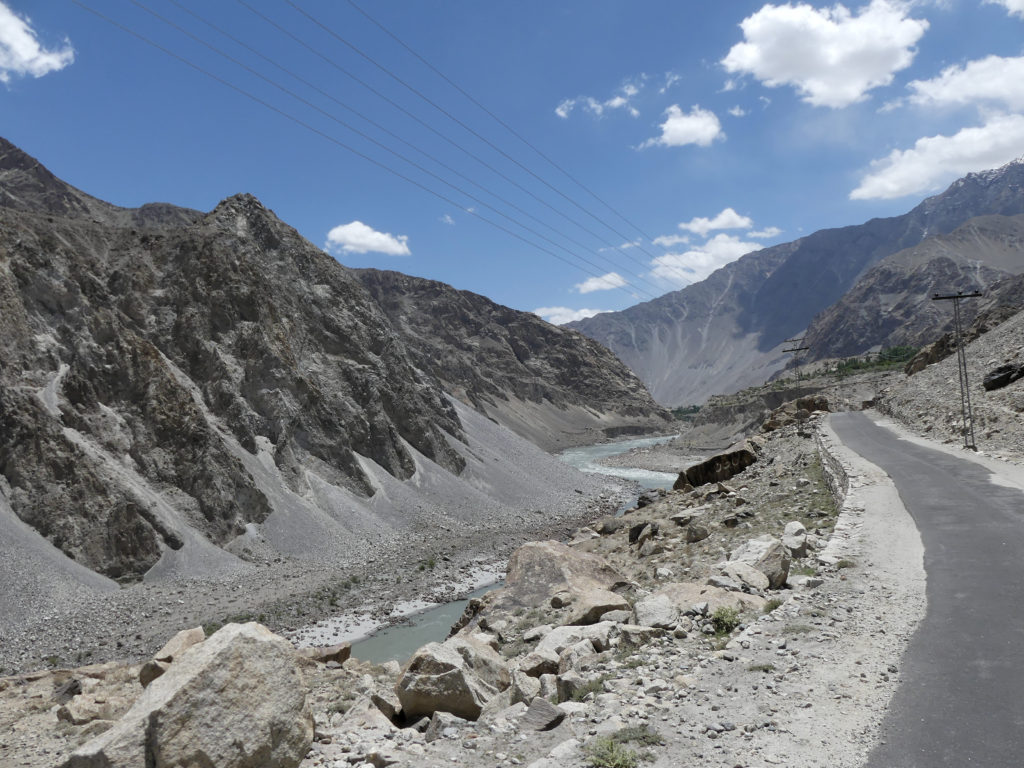
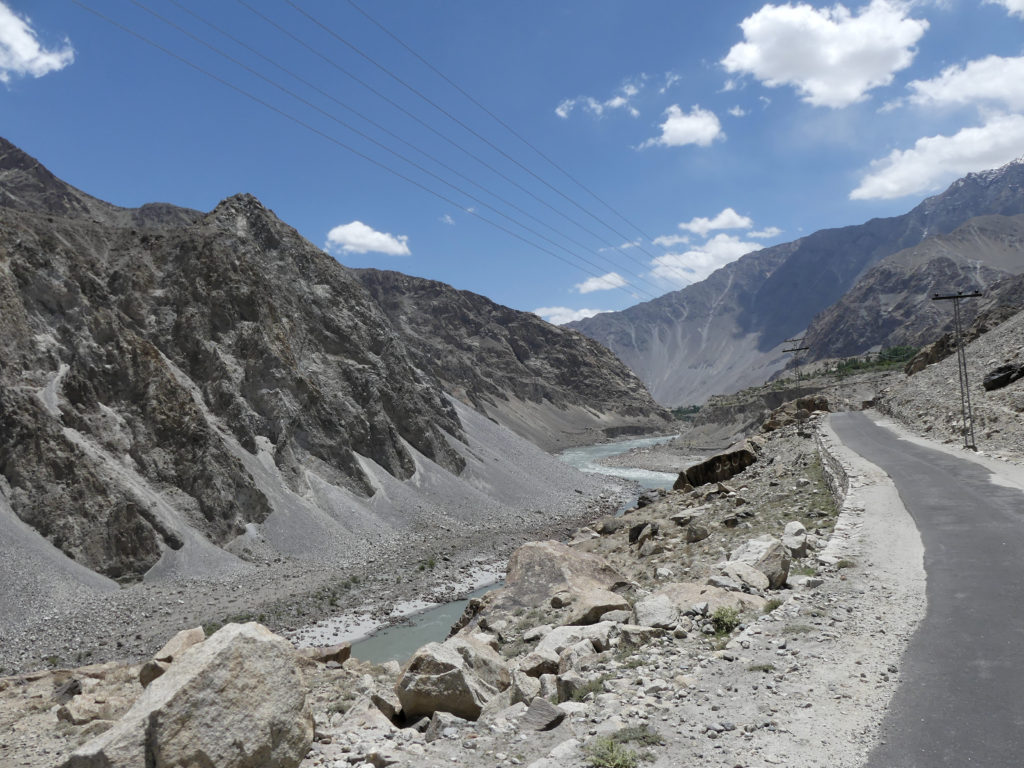
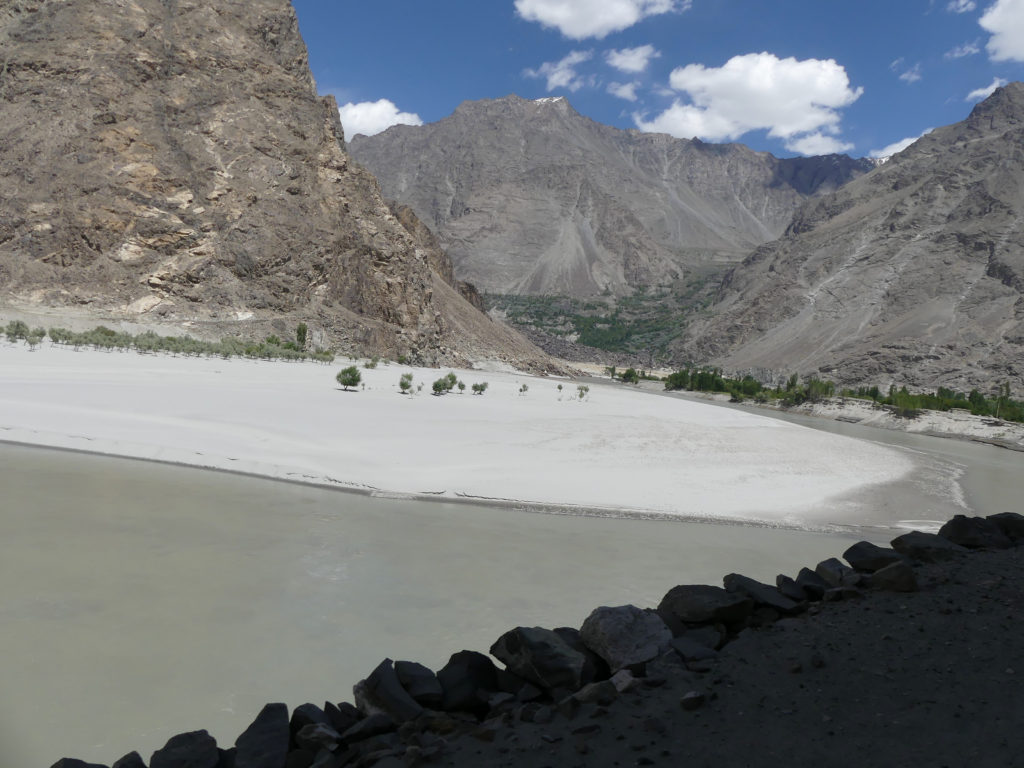
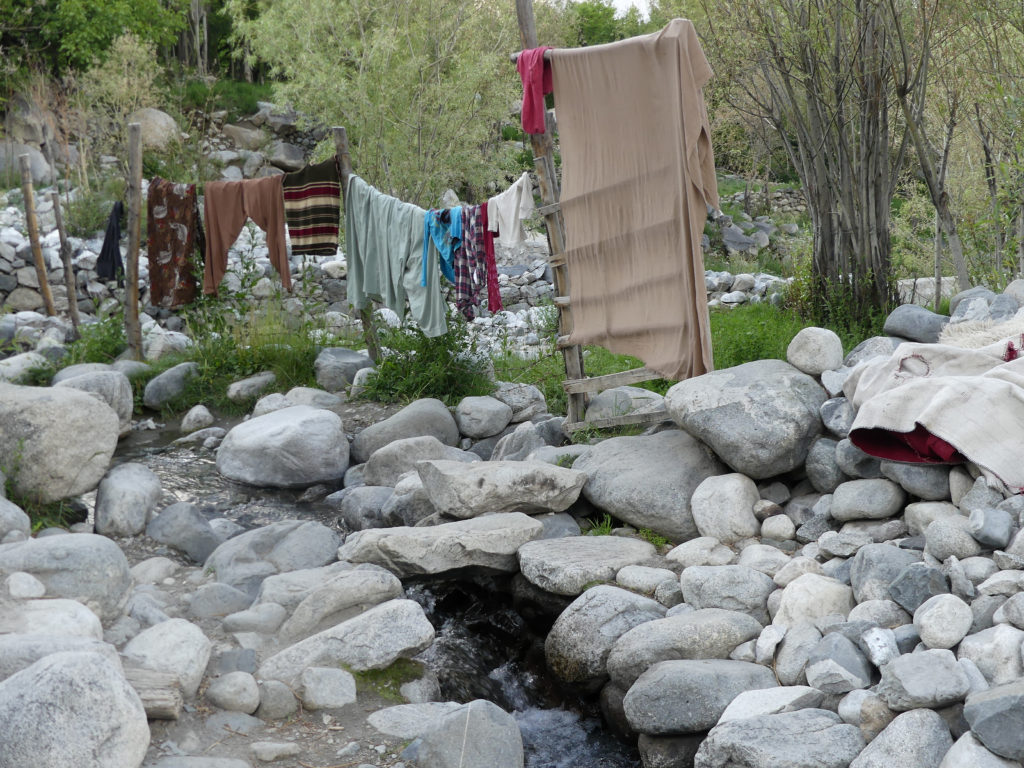

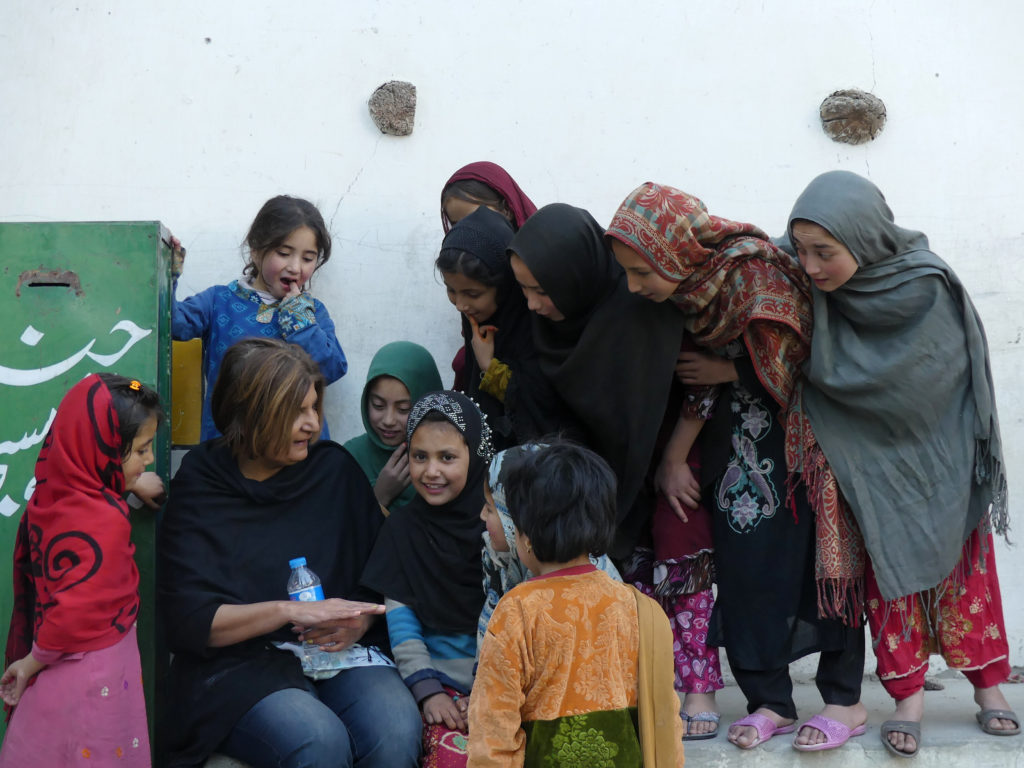
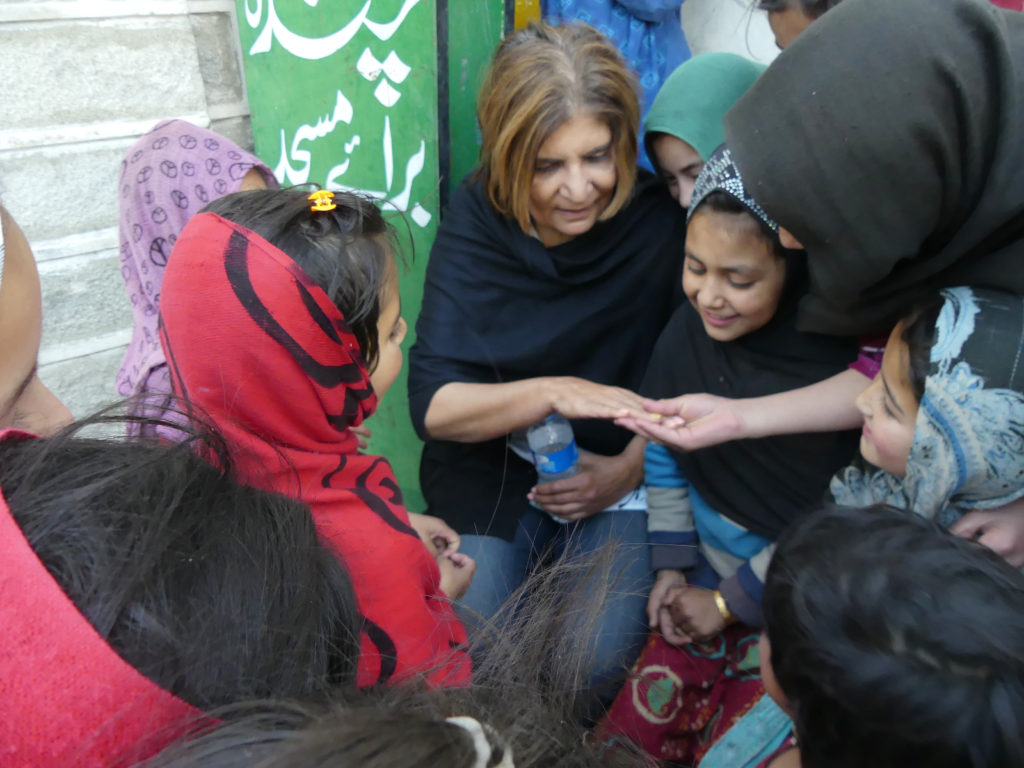
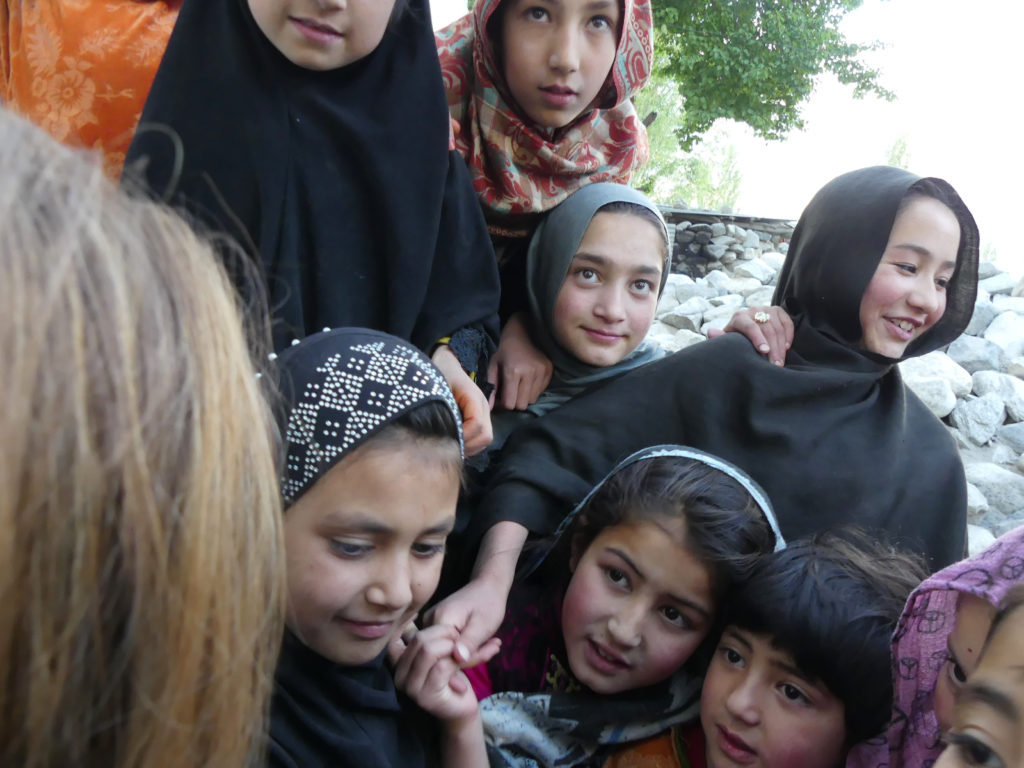


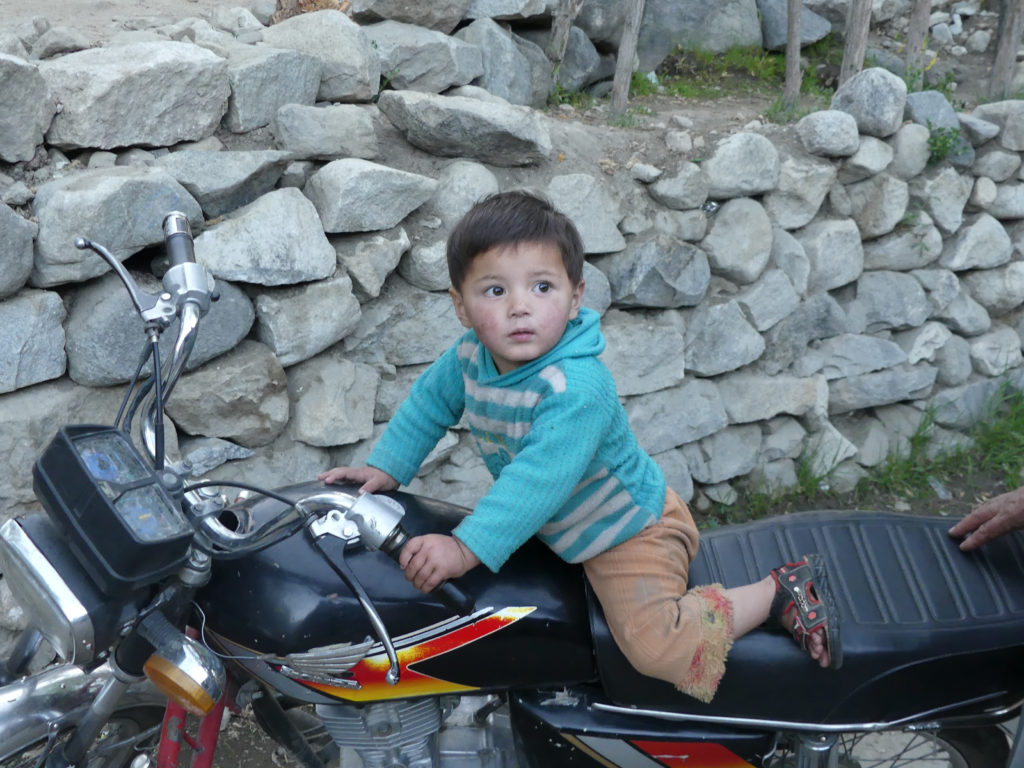
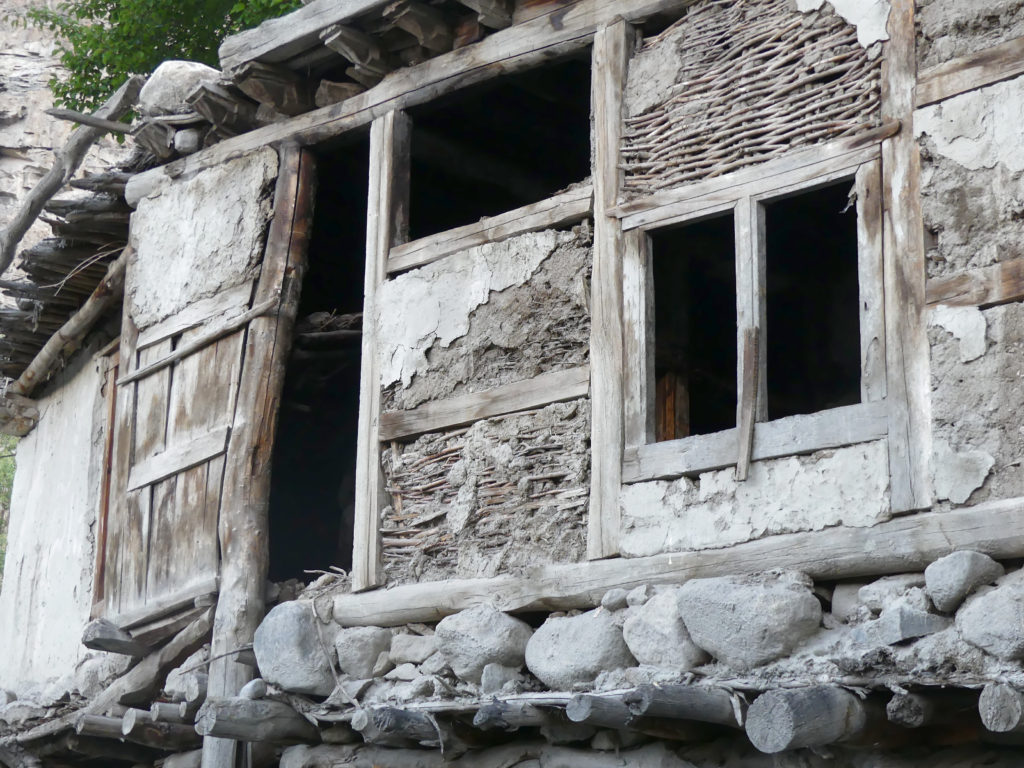 The means of shelter
The means of shelter
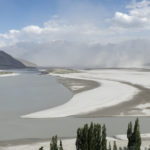


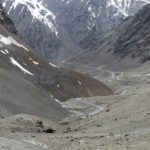
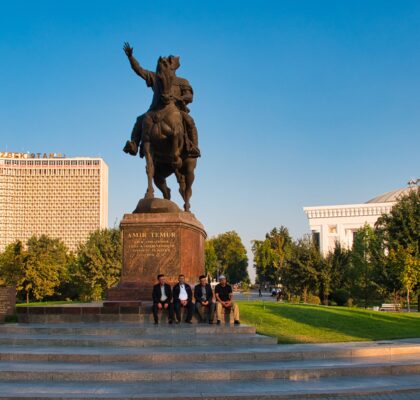

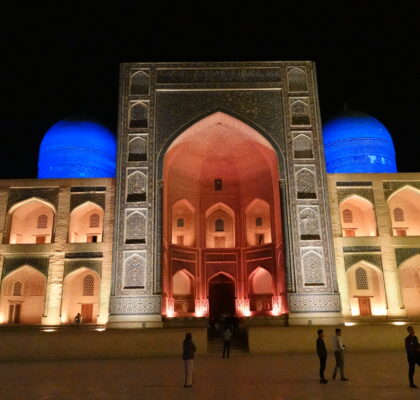
Pingback: Silk Road 10: Gilgit to Skardu, Pakistan - Ali Karim Travelog
Hi there, I would like to say this about this post; in my view its really remarkable for me.
HI Leanne, thanks so much for the compliments; so glad you enjoyed my Travelog blog posts abotu Hunza, Skardu, Khaplu etc on the Silk Road through Pakistan